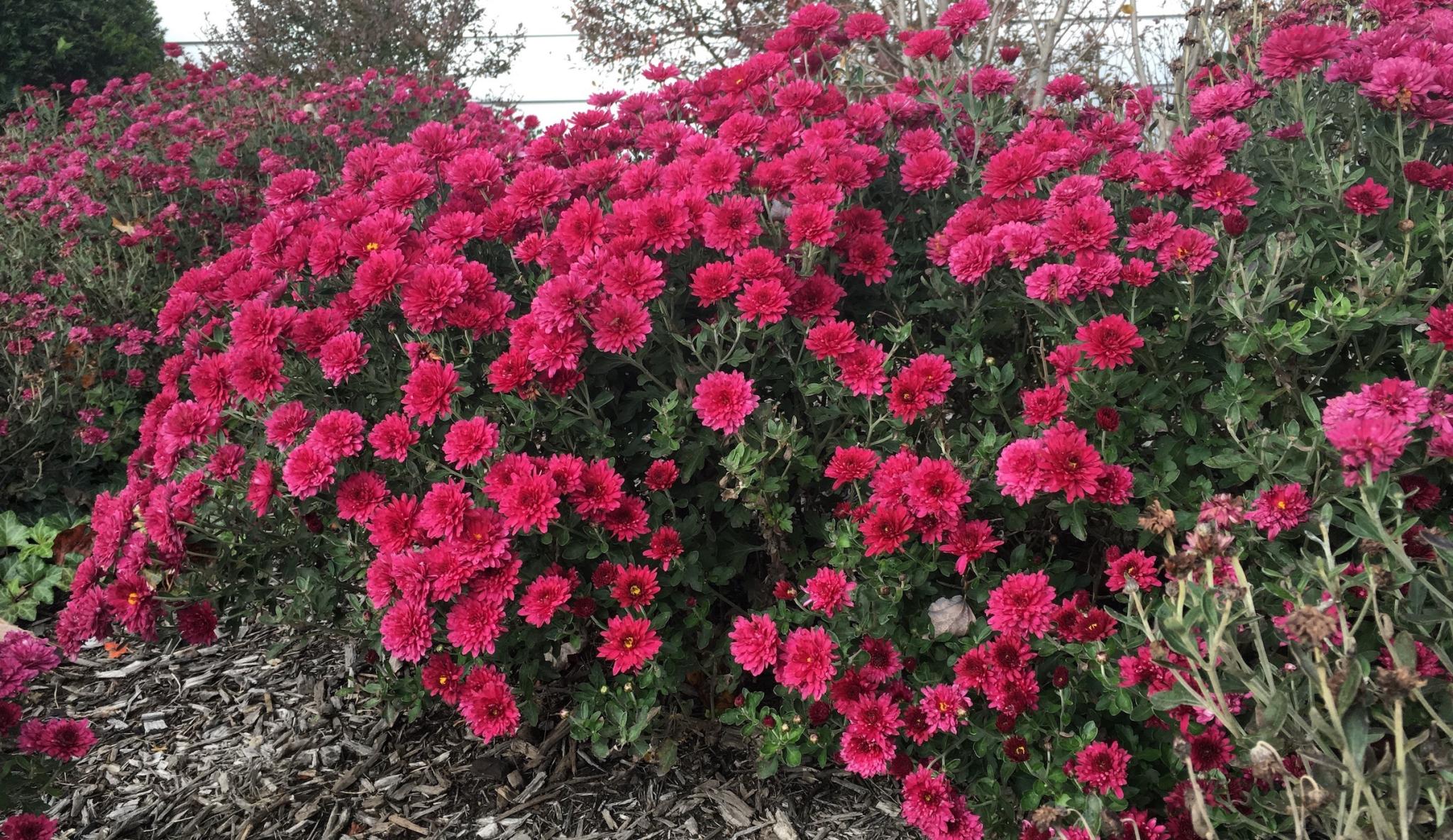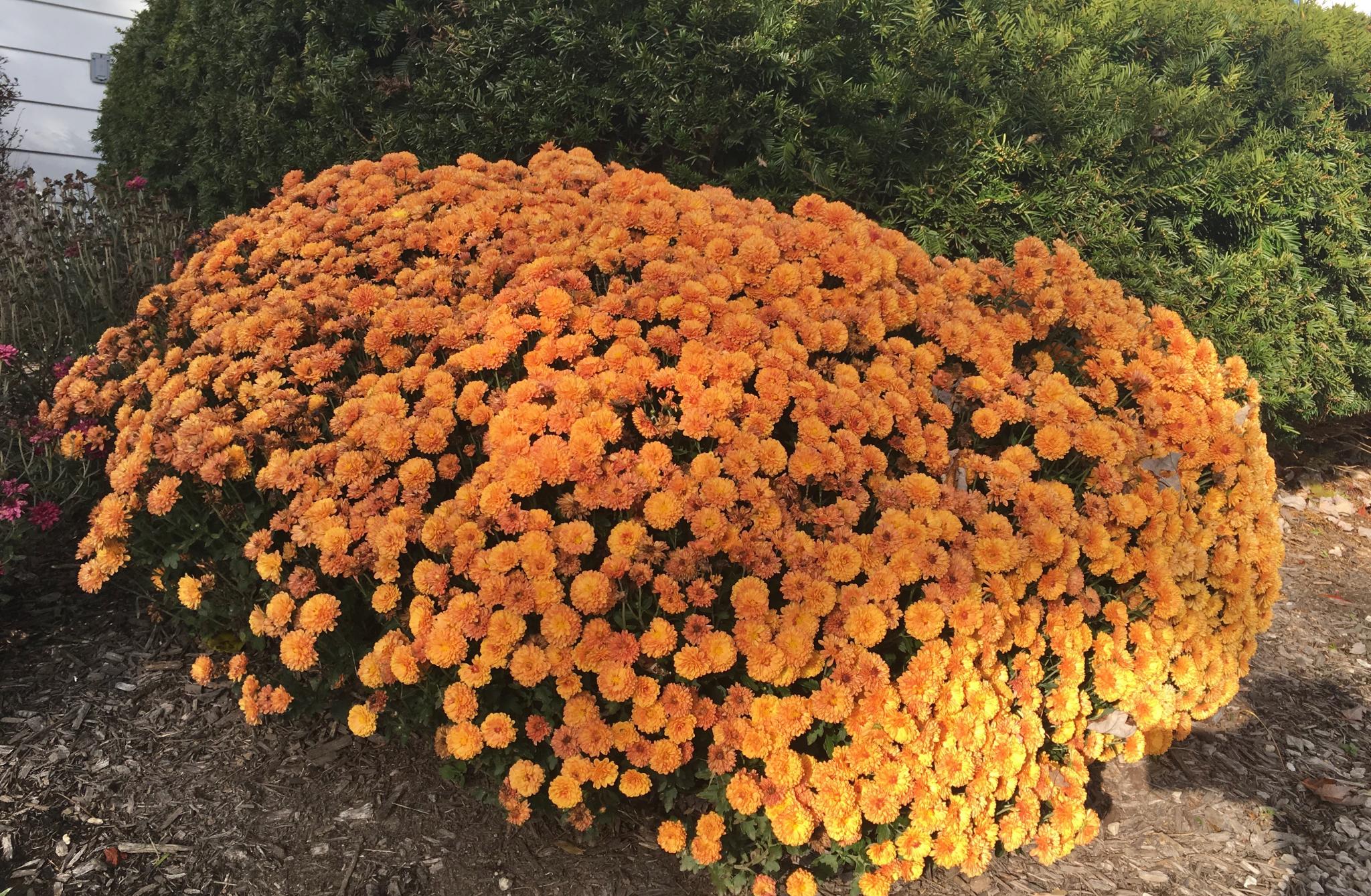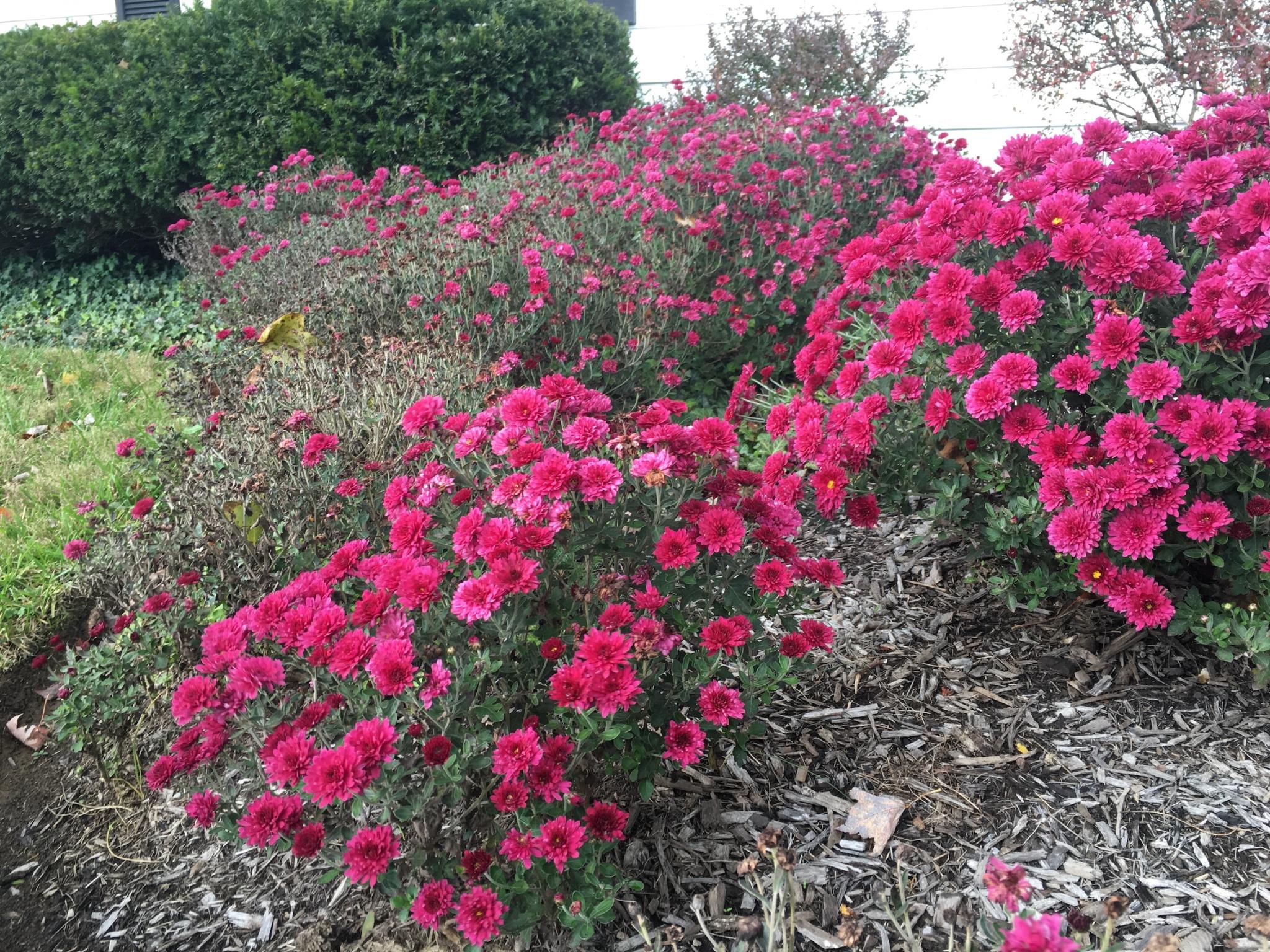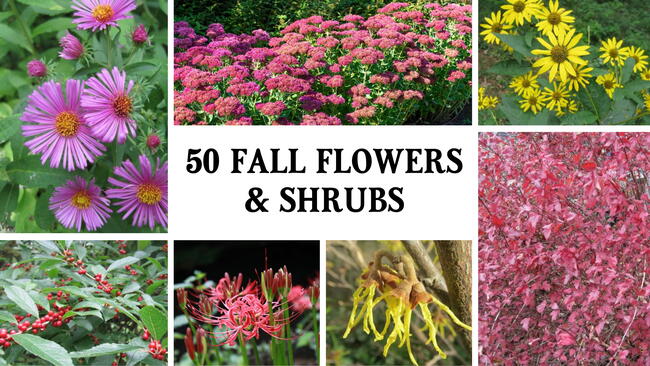
Mum Care 101: Planting, Blooming, and Overwintering Tips
Read Next
Types
Mums belong to one of 13 classes based on flower form and petal shape!
- Irregular Incurve: giant blooms, e.g., ‘Bola de Oro’ (gold)
- Reflect: very large to medium blooms, e.g., ‘Pretty Polly’ (purple, with pink reverses)
- Regular Incurve: ball-shaped, e.g., ‘George Couchman’ (bronze)
- Decorative: flattened, e.g., ‘Coral Charm’ (salmon)
- Intermediate Incurve: more open than other incurves, e.g., ‘St. Tropez’ (crimson, with bronze reverse)
- Pom Pom: balls, e.g., ‘Kevin Mandarin’ (deep orange)
- Single and Semidouble: concave/convex, e.g., ‘Domingo’ (crimson, with yellow center)
- Anemone: single, e.g., ‘Daybreak’ (apricot, with yellow center)
- Spoon: single/daisy with tipped ends, e.g., ‘Kimie’ (yellow, with green center)
- Quill: tubular florets, e.g., ‘King’s Delight’ (true pink)
- Spider: varying florets, e.g., ‘Lava’ (yellow, with red tips)
- Brush or Thistle: upright florets, e.g., ‘Wisp of Pink’ (yellow center)
- Unclassified or Exotic: irregular, e.g., ‘Lone Star’ (pure white)
Extra-hardy Mums
These will survive in frigid climates: ‘Betty Lou’ Maxi Mum, ‘Burnt Copper’, ‘Centerpiece’, ‘Grape Glow’, ‘Lemonsota’, ‘Maroon Pride’, ‘Mellow Moon’, ‘Minnautumn’, ‘Minnpink’, ‘Minnruby’, ‘Minnwhite’, “Minnyellow’, ‘Rose Blush’, ‘Sesqui Centennial Sun’, ‘Snowscape’.

Credit: EdenGardenGr.
Gardening Products
More Like This
When it comes to transplanting your mums from one garden area to another, it would be best to wait until after the plant has stopped blooming later in the season or wait until next spring. You will want to make sure that your mums have time to establish roots in the new location before the cooler weather sets in (depending on your location). If waiting until the spring, it is also a great time to not only move your plants, but also divide them. Dig up the plants in early spring just as new growth appears. Divide each plant into sections with a sharp knife. Each smaller plant should contain several shoots and a portion of the root system. Replant the divisions as soon as possible.
Anything that you can do to provide good drainage will help chrysanthemums to survive. Some root rot diseases will spread by splashing water, so try to have your mums away from puddles if you can. Building up the soil in the area where you'd like to plant can definitely help. Or, you might plant them in containers or raised beds, to get them off any saturated ground. Improving soil drainage by mixing in lots of organic matter might help as well. Also provide good air circulation (such as not too close to other plants, plant in a sunny spot), to help dry leaves during the day and deter disease. Hope this helps!
- « Previous
- 1
- 2
- …
- 10
- Next »















Comments